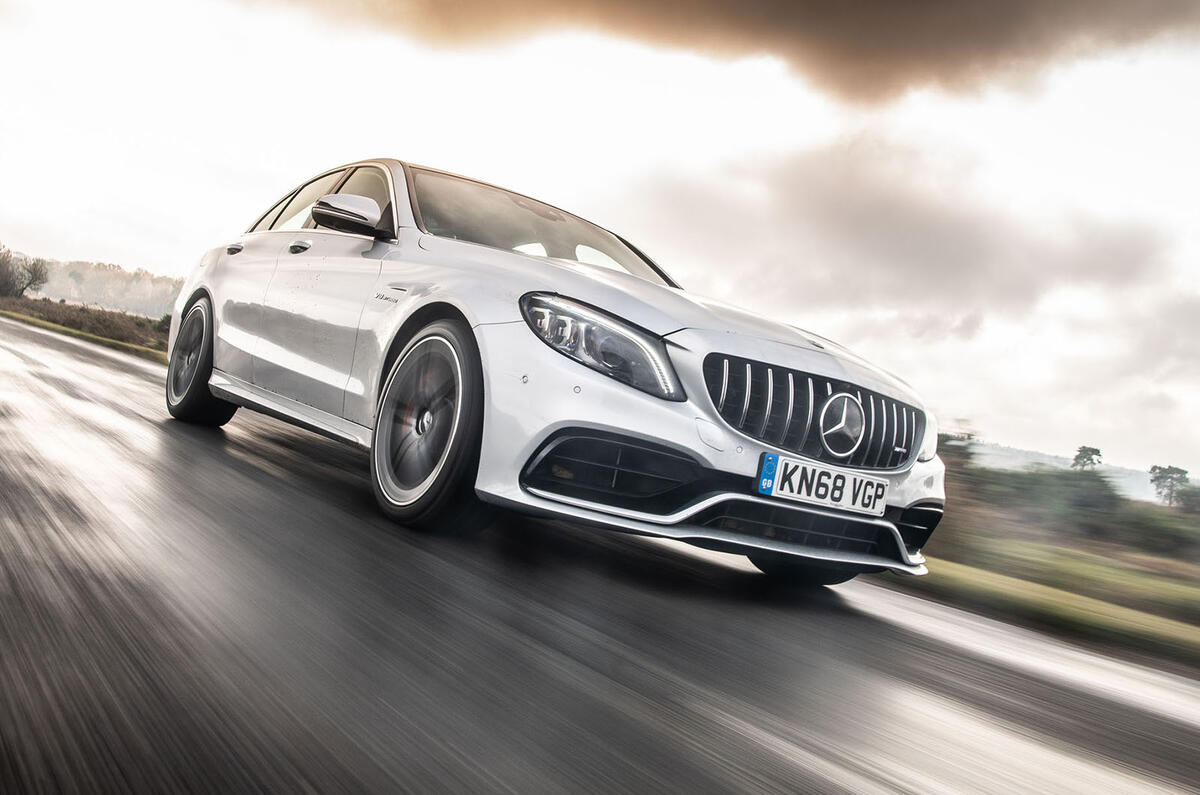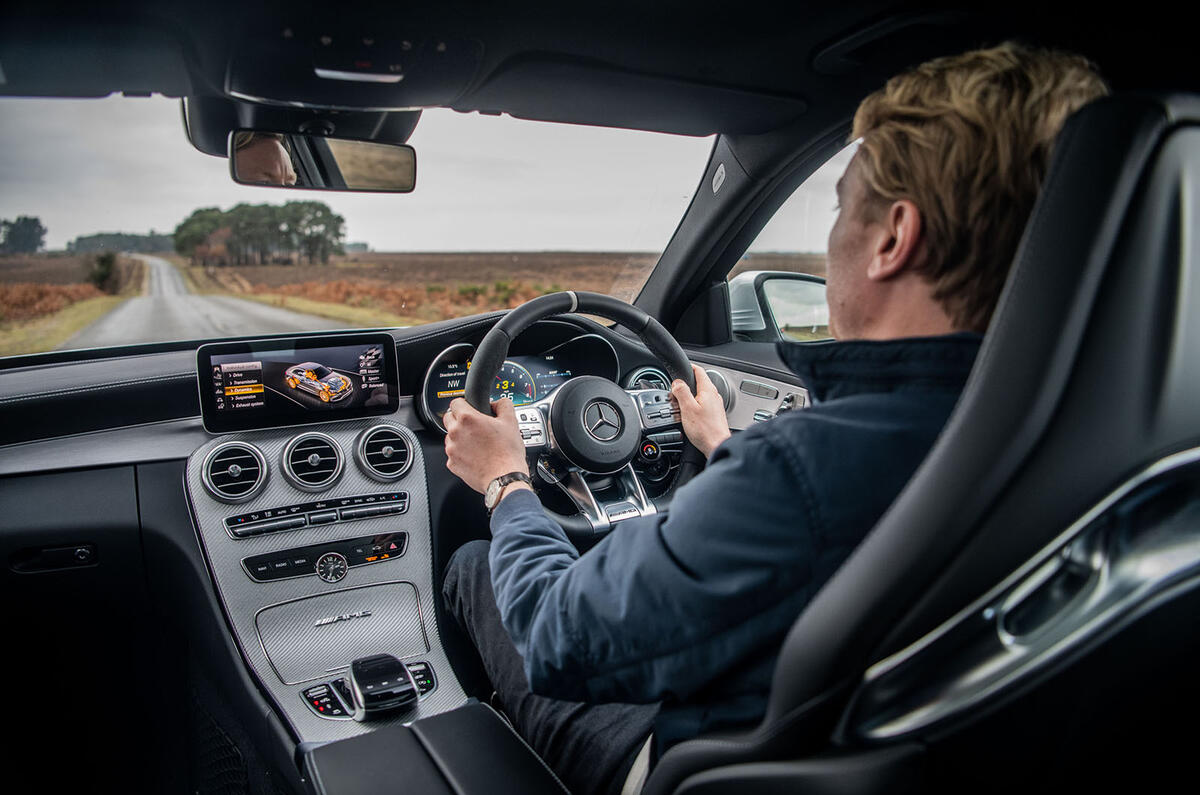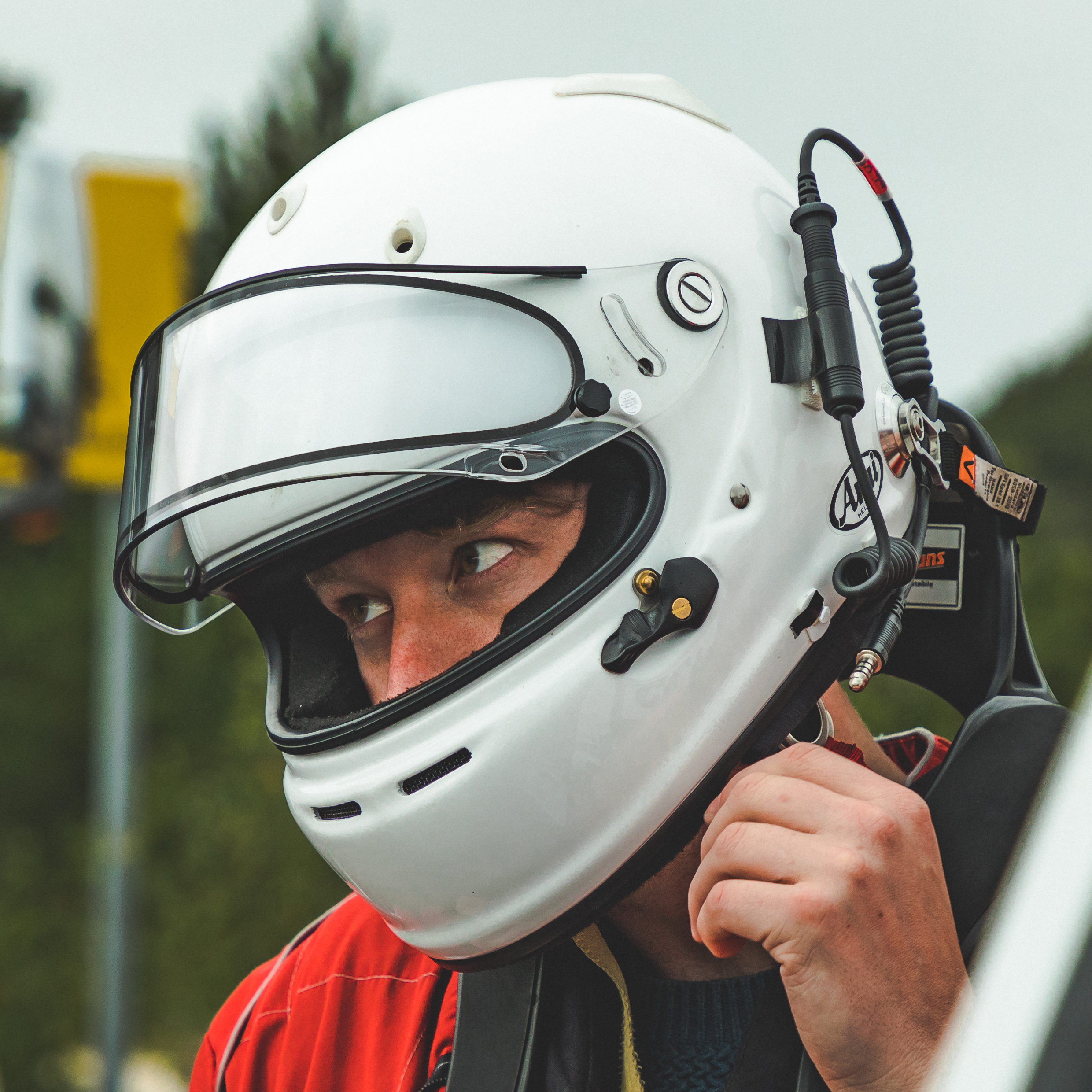What is it?
Line four of the technical specification for this facelifted Mercedes-AMG C63 S is peculiar. It simply states ‘503bhp at 5500-6250rpm’, which is no more than you got in the old Mercedes-AMG C63 S.
Hang on a second. Power – specifically, more power than the outgoing model – is AMG’s oldest, dearest friend. So what's going on?
It’s possible that the German power wars are finally drawing to a close. More probable is that giving the C-Class any more clout would result in it treading on the toes of the mighty Mercedes-AMG E 63 in terms of power-to-weight and performance, and today’s strict model hierarchies simply won’t permit this.
Or perhaps Mercedes has decided that 503bhp and 516lb ft are enough for a junior saloon and has instead trained its expertise on making such explosive force more usable in the real world.
The truth is somewhere between those second and third scenarios. In any case, no rival punched harder than the C63 S when it launched in 2015 and three years later, even after the arrival of a new B9-generation Audi RS4 Avant, the Ferrari-engined Alfa Romeo Giulia Quadrifoglio and a BMW M3 CS honed to supreme heights, this is still the case.
So, what has changed? Little in terms of chassis hardware. Both the C63 and C63 S continue to use a wet-sumped 4.0-litre twin-turbocharged petrol V8 and multi-link suspension with adaptive dampers and steel springs. Both also get an e-differential previously reserved for the S, although the more expensive car now also benefits from dynamic engine mounts that are said to improve steering feel and response.
Things aren’t nearly so straightforward when it comes to the software. In fact, C63 S ownership now seems a voyage of discovery where the ultimate destination is a distant realm in which you’re not constantly tempted to tinker with the electronic chassis settings.
Mercedes’ familiar Dynamic Select programme remains, with modes ranging from Slippery through Comfort, Sport, Sport+ and Race. These alter engine and transmission response, steering weight, the firmness of the damping and the all-important exhaust tone.
Additionally, there's an AMG Dynamics programme that optimises (or otherwise, as we shall see) traction using the car’s ESP co-ordinated with a brake-based torque vectoring system. There are modes for this, too. Unambiguously named, they range from Basic through Advanced to Pro and finally Master, which programmes the differential to lock up early and aggressively.
And you can't miss the new AMG Traction Control system. Gone are the days when such software was either on or off, perhaps with a third option yielding a smidgen of slip but nothing potentially calamitous. Long gone. This C63 S has a nine-stage setup borrowed from the GT R supercar, which itself uses a derivation of a system found in Mercedes' GT3 racers. Alterations are made using a digital rotary dial on the steering wheel, which looks slick but feels as though you might accidentally knock it off.
In short, a car whose colossal appeal always sat atop relatively simple pleasures now seems to be an extraordinarily complicated device.

















































Join the debate
Add your comment
Thanks for the review
Thanks for this review! You described everything in great detail. It helped me a lot with the choice. I want to go on tour with the troupe zumanity cirque du soleil. I hope a long relocation will be postponed well. I want everything to go with comfort and safety.
/*-->*/
On the one hand Mercedes
On the one hand Mercedes places a gem of a classic analogue clock on the centre concole, on the other hand it chooses 'futuristic' digital instrument graphics. This is an inexcusable clash in 'design language'
abkq wrote:
Lord, you must be awful company if you are as dreary in life as you most surely are in print.
Double down!!
A distasteful phrase. And surely used in completely the wrong context in this article???
Agreed
Bloody irritating, isn't it? These people write for a living - you'd think they'd have the gumption to avoid clichéd, trendy, and otherwise hackneyed phrases.
A few of the many others I can't stand are: 'full-fat', 'architecture', 'design-language', 'future plans' (when would the plans be for? The past?), 'side profile', price point. I also deplore those interminable opening sections which attempt to 'explain' what type of car it is, where it sits in the maker's range and what part of the market it occupies.
We can see for ourselves!
beechie wrote:
What's wrong with 'design language'? 'Design' is too general a description. 'Design language' or 'design grammar' describes the way a design is constructed (its rules, its formal, thematic material etc.) or it articulates the theoretical basis of design cf. Deryck Cooke's "The Language of Music", Christopher Alexander's "A Pattern Language"